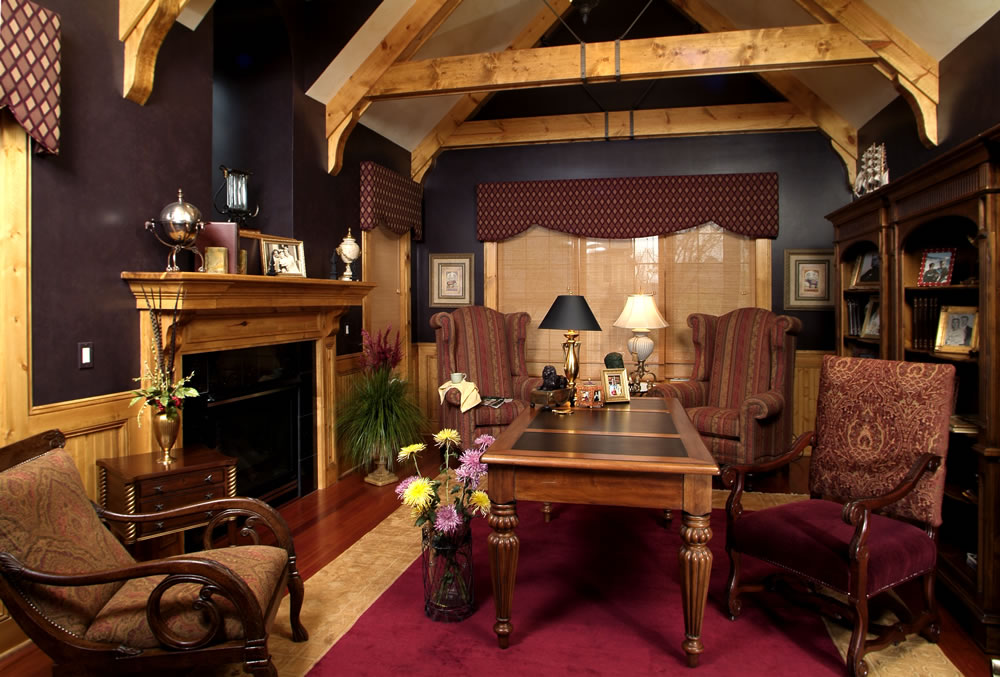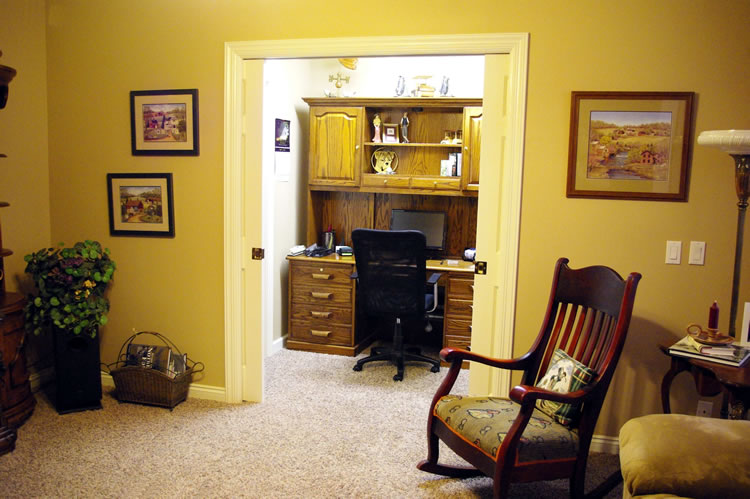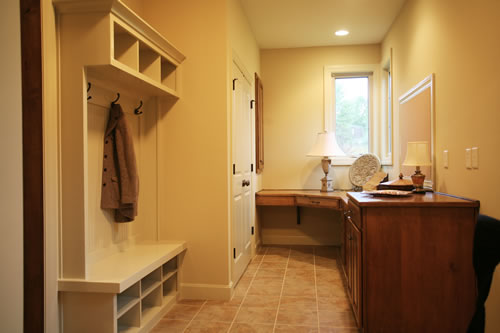Part III in our series – Avoiding Common Regrets When Building Your New Home

Whether you work from home full time or just need a space to keep your personal finances in order, the home office has become an essential room in the home. Over 2 million people work from home at least part-time, changing our priorities in the way we design our homes.
Deemed more important than the traditional dining room, many people are ditching the dinner table for a desk, and saying goodbye to a formal eating space. Who can blame them? A room that is only used during the holidays is hardly worth keeping. From condo living to a 4000+ sq. foot home, there are endless possibilities to design your work space.
Make it practical
One very important aspect of designing a home office is location. Have kids? They may not do well with unseen boundary lines, so the living room is probably not the best place to get set up. What about frequent guests staying the night? You won’t get much accomplished when visitors come into town if your office doubles as a guest bedroom. Privacy and a quiet atmosphere are essential to making your home office a success. It is also important to have a window that lets in a good amount of natural light due to the strong relationship between workplace daylight exposure and your sleep, activity, and quality of life.
Make it useful
Perhaps you have the prettiest office on the block, but it won’t do you much good if you don’t have room to store all of your supplies. A home office must have plenty of storage space to be useful. Drawers, shelves, and filing cabinets are all great places to start maximizing space. For those in truly tight quarters, consider floating shelves above your desk for extra storage that doesn’t take up unnecessary floor space.
Make it resourceful
There are certain items that every home office should have. When planning yours, you should definitely consider these:
- Office desk: Every workspace needs a desk, and if your space can accommodate a larger desk, then it is worth the investment. The desk is where you will be doing all of your work, and it is important to have one large enough to spread your work in front of you.
- Office chair: Finding the right office chair isn’t as easy as it looks. Some elements to consider are a chair that swivels, has adequate padding, good lumbar support, and adjustable height.
- Storage: Even if the majority of your work is done on a computer, there will always be some paperwork to keep in your office. If you don’t have a lot of paperwork, then a small one- or two-drawer filing cabinet might be a good choice. It is always best to overestimate your needs so you do not run out of space.
Make it stylish
Functionality is always essential when designing any space; however, you should not sacrifice style for function. It is important to design a space that is visually appealing so you don’t dread going to work. Brighten your office and your mood by:
- Adding plants.
- Personalizing your space with pictures.
- Hanging an inspiration board to remember the goals you are working toward.
Condo Living

Perhaps you live in a small condo or townhome and a full-size home office does not fit in the space you have. Consider a “pocket office” for your small condo or otherwise cramped quarters. These spaces can fit into a large closet or even a spare corner of a room. You don’t need a lot of room to create a workspace that is both useful and beautiful.
Larger Homes
There are many design and layout options to choose from when planning an office in a large home. To get away from the noise and distraction of the first floor, some two-story homeowners are opting to put their office on the top floor directly off the stairs. For that same reason, others choose to nestle their office in a corner next to a bedroom.
When choosing your layout, keep in mind your personal work style. Do you thrive on loud noise or music? Near the living room is a good possibility. Perhaps you prefer to work in absolute silence? Near the back of the house or by an older child’s bedroom is better. Make your office tailor-fit to your own needs to make your work environment a success.
Libraries and Studies
Not everyone needs a large workspace in their home, and a library/personal study is an option for those who might be looking for a more relaxed environment for light work, without the business overtones.
While we may not all be capable of installing an ornate study/library, there are many smaller scale options that would be just as satisfying. Built-in bookshelves might be expensive, but freestanding models come in a variety of sizes, colors and price points. Add a desk to turn your library into a study were you can write or take notes on your reading. Keeping your essential costs down allows you to splurge on one or two decorative pieces to give your library an elegant feel. Antique bookstands and globes are a good place to start, but consider a rolling library ladder for an old-timey, whimsical touch.
An Office that Fits
Not everyone is lucky enough to have the option of working full-time out of their home, but we can all use an organized space for paying the bills, working on the computer, and storing our personal or business paperwork. It doesn’t need to be expensive or elaborate, but it should invite calmness and productivity. By critically thinking about your location, planning for enough storage space, and decorating it to look inviting, you can easily create a workspace you will enjoy every day.
Previous Posts in this series
6 Master Tips for the Master Bedroom
Avoiding Common Regrets When Building Your New Home


